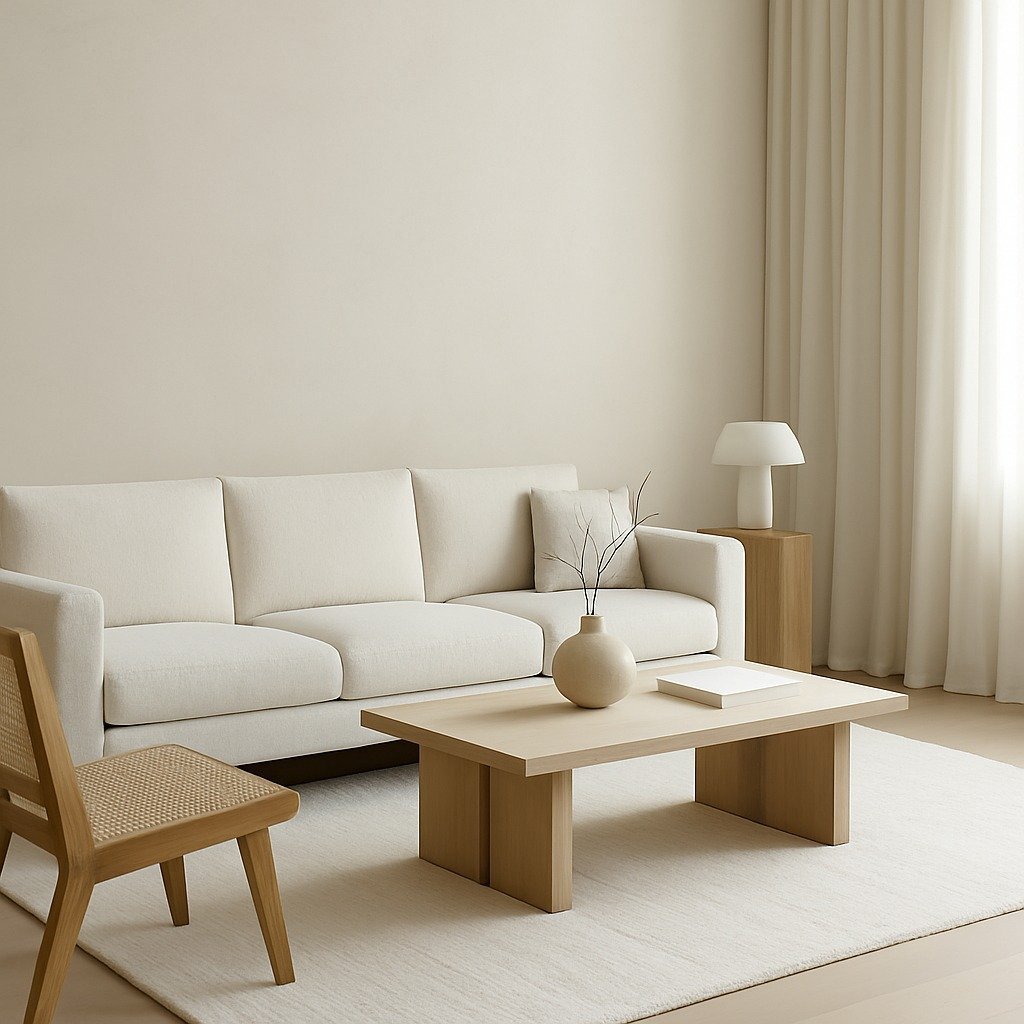The Art of Minimalist Interior Design: Simplicity that Speaks Volumes

In an era of excess, minimalist interior design is a breath of fresh air. Clean lines, calm rooms, and thoughtful choices are the hallmarks of this philosophy of design, which has rendered it one of the most important interior trends of the 21st century. But a concept far from the popular myth, minimalism is not about hollow, empty rooms—it’s about intention, harmony, and peace.
The origin of minimalist interior design is based on the saying “less is more.” This is eliminating the excess and retaining only that which actually contributes to your life and space. It’s a conscious move away from ornament and towards curation. Each and every piece of furniture, color, and material must serve a purpose or bring you joy.
Minimalist rooms tend to favor neutral color palettes—white, beige, grey, soft taupe, and muted earth tones. These are open and serene and also allow light to bounce naturally around the room. Designers will occasionally add a jarring black accent or one splash of color—deep green or navy, say—to add contrast and sophistication without overwhelming the eye.
The hallmark of minimalist rooms is open floor plans and uncluttered surfaces. Each space is made to “breathe” with plenty of negative space that creates visual clarity and flow. Furniture is low-profile, functional, and streamlined, frequently constructed of natural materials such as wood, leather, or linen to temper the look and provide warmth. Clean lines and geometric shapes characterize everything from tables to cabinetry, and built-in storage hides clutter from view altogether.
Lighting is also crucial in minimalist design. Rather than ornate chandeliers or heavy lighting fixtures, natural light and gentle artificial light sources are the focus. Sheer drapes, large windows, and strategically placed recessed lighting or pendant lights maintain the light, airy, and earthy feel. The lighting is never bold—it is gentle sophistication.
Textures in minimal rooms perform the function that pattern or color might in other design. Since the visual elements are subdued, combining warm materials like wool or cashmere with cool ceramics or cold stone provides depth of texture. This warm/cool texture contrast provides depth to a neutral color palette and prevents the room from feeling sterile.
When ornamentation is the goal, minimalism is the art of restraint. Instead of covering all shelves and walls, minimalist rooms tend to feature one or two statement pieces—a sculptural vase, an abstract painting, or a hand-carved chair. They are punctuation marks in a sentence, adding meaning to the whites and attracting the eye through contrast.
One of the most attractive features of minimalist interior design is its versatility with lifestyles. For corporate professionals, it creates a stress-free environment that encourages focus and productivity. For families, it is a calming, uncluttered refuge. And for artists, a clean slate that inspires new ideas.
Minimalism also encourages sustainable living. By spending money on fewer, higher-quality items and emphasizing function over quantity, owners reduce waste and consumerism. The philosophy of minimalism is closely related to that of environmental values, where there is an encouragement of mindful purchase, reuse, and long-term craftsmanship.
Designers recommend beginning with decluttering if you’re a fan of minimalism. Room by room, examine every object—does it have a purpose or make you happy? If not, it may be time to let it go. From there, streamline the furniture arrangement to capitalize on open space. Dampen your color scheme and invest in multi-functional items—such as a bench that doubles as storage or a modular sofa that adjusts with necessity.
The second suggestion is to choose meaningful decor. You have nothing but the things you emphasize in a minimalist room, so choose things that matter to you. Maybe it’s something you’ve brought back from a trip, something that has been passed down as an heirloom, or some painting that you have an emotional connection with. That makes your room not only minimalist but meaningfully minimalist.
Even small spaces can be opened up with minimalistic design. Studio apartments, for instance, can look bigger with floating shelves, wall desks, and foldable furniture. Mirrors can bounce natural light and encourage openness, whereas lighting and rugs can define boundaries in open-plan arrangements.
Even though minimalist design has existed for decades—based on Japanese Zen philosophy and Scandinavian design—it is still evolving. Today’s minimalist spaces now incorporate wellness, technology, and even biophilic aspects such as indoor plants and natural finishes. The outcome is a soothing, modern, and networked space that promotes slower, more contemplative living.
At its essence, minimalist interior design is not simply a design movement—it’s a lifestyle. It challenges you to live purposefully, to enjoy quality rather than quantity, and to be immersed in only that which makes you better. In a world where we’re subjected to so much noise, color, and clutter, minimalism is a sanctuary of serenity.
Through creating simple, elegant, and functional houses, minimalist architecture proves that more is not necessary to have more. Occasionally the most engaging rooms are the rooms that provide space to breathe.
